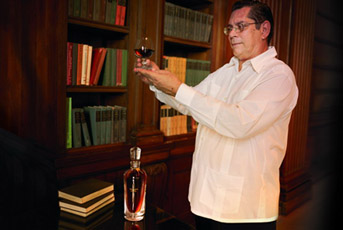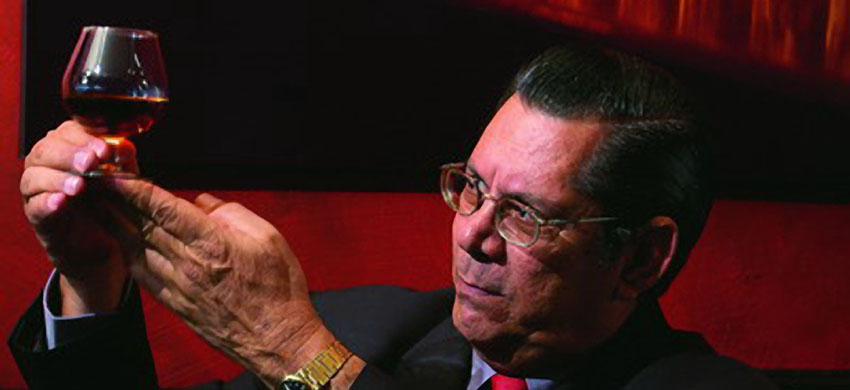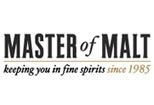Everyone who talks about Havana Club (and knows his Rum history) can’t help but to think of that other brand that originates from Cuba: Bacardi. These two names are linked through history. When Fidel Castro got power in Cuba in 1959, he shortly after that confiscated all companies on Cuban soil.
Bacardi was already known outside Cuba and had copyrighted their brand and logo, which is why Castro was not able to sell his Bacardi Rum outside Cuba. To make things a little bit easier, Castro changed the name into Havana Club, a name formerly owned by the Arechabala family.
Because of the embargo of the USA on all Cuban products, Cuba became even more isolated.
With the growth of Havana Club one might ask himself whether Bacardi is standing in the way or if it is just a small hill to take. In Spain and the USA, Havana Club has had big problems in court.
According to Don José these are law problems, but they are not important to him.
When Havana Club created a new Reserva Rum, two years later Bacardi created one. Every time Havana Club creates a new rum, Bacardi makes a copy and that really hurts Don José.
Some bars say that Bacardi does not allow them to sell Havana Club, this also includes European bars.
Don José claims he saw this happening recently in Paris where some “Bacardi guy” came to the bar and asked how much they made with selling Havana Club. That guy took over the bank credit and said that from now on there will only be Bacardi in this bar.
Don José says this is not ethical, he thinks this is done by some salesmen and not by Bacardi itself, because he thinks it would be very low for an international company to do such tricks. Don José doesn’t want to think about the possibility of Bacardi doing such things.
He has always respected the competition, including Bacardi. He can guarantee that Havana Club plays fair.
Havana Club does not use colouring or any extra flavouring. Don José is sure there are plenty of companies that put something in their rums or even use a non-sugarcane alcohol.
Don José:
“By doing so, they loose the knowledge of real RUM. They will kill the rum culture and companies like ours keep it alive. The people who make rum may die but the culture will always remain. If you don’t work with that system, you work in the “money system.” I understand the saying “you win some, you loose some” but if you kill the culture there is nothing left to win.
We keep the culture alive, because the consumers will not accept the fake rum (at least when they know it is fake). They will search for the real thing like Havana Club. We believe in the truth which will always prevail. That’s the difference between short term thinking and long term thinking. Alas there are many persons who keep on thinking the short term.
They want their money and culture is nothing for them. That’s the reason why I defend the culture of Cuba. I didn’t come to the Netherlands to defend a market, but to give a cultural treasure with my fragile hands. I think we should let history remain as history. Bacardi will eventually become tired of this all and Havana Club will maintain their Rum production and we will keep on growing.
The last 12 years we’ve had a 15 % growth per year while Bacardi stopped growing in the same period. I even think they lost sales. We keep sales records of Bacardi, because we have to know our competition. I will stay loyal to our culture, without the bobo’s.“
In 2007, Havana Club opened a new distillery in Cuba. According to Don José, Bacardi sold several barrels last year and Don José needed to buy double the number of barrels that Bacardi sold. They have more barrels now at Havana Club than ever before. There is no stainless steel ageing here, unlike at many other companies. As don José puts it: ”He, who fits the sombrero, puts it on his head.”
Don José says he stops where marketing starts. He doesn’t work at the marketing department, but he understands he is a marketing tool. Don José is afraid the marketing department will gain too much influence on the Master Blender. First Don José will defend the Cuban Culture, second he will defend the Cuban brand Havana Club. Not the other way around.
Don José works for a culture, while marketing works for a brand. Therefore Don José doesn’t want to say too much about the brand Bacardi. He wants to talk about the strong point of Havana Club and everybody is free to compare these with the strong points of other companies.
 All he wants to say is that if Bacardi claims to be a Cuban Rum, they are lying. They have their origin in Cuba, but they do not produce a Cuban Rum.
All he wants to say is that if Bacardi claims to be a Cuban Rum, they are lying. They have their origin in Cuba, but they do not produce a Cuban Rum.
Bacardi used to be Cuban, but since they don’t use the same ingredients no more, it tastes different now.
At Havana Club they produce the Rum like they did years ago. Bacardi left the country, but the sugarcane did not. The stock also stayed in Cuba and even the Master Blenders stayed. So at Bacardi they can produce Rum, but not Cuban.
If Don José wanted to work in the Netherlands now he could become a Master Blender.
Alas he could never produce a Cuban Rum, because he doesn’t have the Cuban soil or climate. Otherwise he thinks he could produce a Cuban look alike rum. If Bacardi wants to differentiate what’s Cuban about the Cuban rum, they may ask Don José’s help. He will help them in front of cameras and on live television around the world. Don José doesn’t want the journalists to change some of his words in this matter.
Don José thinks that Cuban Rum has grown from a pirate drink to a higher sophisticated level, thanks to Bacardi. He has the deepest respect for that and he wants to thank Facundo Bacardi for that.
Even though there might be some problems now, Don José will always have respect for the history of rum, including Bacardi’s. He has showed his respect to Facundo in many public occasions.
Even today Havana Club is doing that because the Bacardi Mojito promotion gives Havana Club a stronger base as well. Don José thinks that a true Mojito must be made with Cuban Rum.
Afterall, Cuba is the place where they first created it. Don José also developed the Havana Club Añejo so it could be used in the Cuba Libre. It took him months to learn how the Rum mixes best with coke. The Añejo is ideal for this.
Don José has got nothing against any brand. That’s the consumer’s choice. Even with the Americans he has no problems, because the problems only exist between the leaders of both countries.
He thinks these problems will be solved soon, so Havana Club even anticipates here. They increased their production already to supply the American market. They think they can sell 2 million bottles Havana Club the first year.
A study of the American market gave this as a result. Of those 2 million bottles, about 50% will be white. The rest will be aged. Bacardi sells about 80% white and 20% aged. All that Havana Club can do now is wait for the right moment.
Whenever the embargo stops, they won’t find Havana Club sleeping. That is the responsibility of Don José. With or without the American market, Havana Club is growing every year. In 2008, the growth was 12 %.
Not all Rums have to be ready for the American market. The Havana Club 15 year old is (officially) only available in Cuba. Nothing is going to change that. Havana Club only wants it to be available there. They are working on some new products to answer the market of the 15 year old but they are not ready yet. This will take months if not years.
Even though time is an important factor, Don José claims that the Cuban rum industry is blessed with the warm climate, which the Scottish distillers don’t have.
Yes, the angels share in Cuba is 4 times higher than in Scotland, but so is the theoretical ageing period. Therefore Don José thinks you should compare his 7 year old Rum with a 28 year old Whisky.
Don José took some Rum with him one day and asked the people to guess the age. He wrote down the answer on a paper. Some people said 20 years. Some said 18 or 19. The paper showed that it was a 6 year old rum, but Don José also wrote down that the people would guess it to be 18 years old.
The ageing process happens much quicker in the warm climate of Cuba, but without to much wood in the taste. You would easily find fruit, tobacco and chocolate in it.
Those flavours don’t come from the wood but from the distillation process. Even some famous rums that win prices on all the tastings around the world are wood liqueur for Don José.
He thinks the consumer wants Rum and not wood. It is a complicated world, he says, but a very interesting one.
The 56 year old Don José needs to rest now because he has to fly to Madrid on the next day. Then he will have to go to Paris in order to get to Havana. He has been on this trip for 17 days now and next week he will arrive to Chile.
Go back to: Master of all Master Blenders Don José Navarro Part I
René van Hoven (Rumpages.com)
Other articles by René van Hoven:
Mount Gay - The Oldest Rum Brand in the World
Ron Zacapa Part I: Interview with the Master Blender
Ron Zacapa Part II: Solera System Explained
Ron Zacapa Part III: The Evolution of the Packaging
Refined Vices Rum Reviews:
Havana Club Añejo Especial
Havana Club Añejo 7 Años
Havana Club Cuban Barrel Proof



